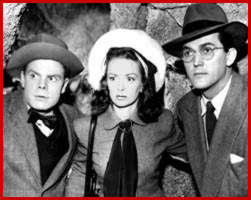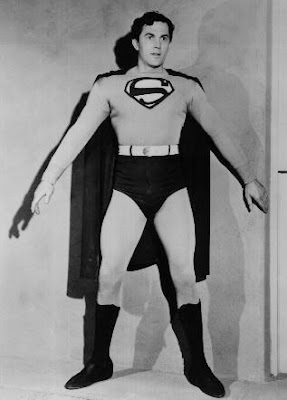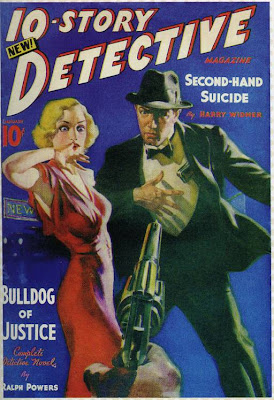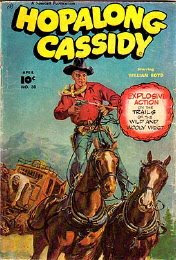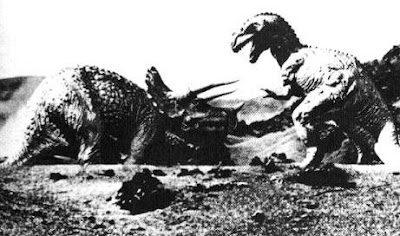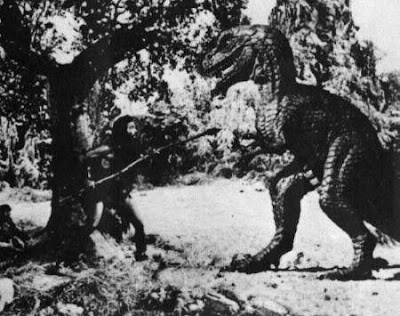EBENEZER SCROOGE
We are indeed our brother's keepers. We really are responsible for each other--obligated to use whatever resources God gives us to help others.
No work of fiction makes this point more effectively than Charles Dickens' "A Christmas Carol," first published in 1843. It's a story that's been told and re-told countless times--it may very well hold the record for the greatest number of movie and TV adaptations (both live action and animated). It seems as if every sit-com ever aired has done a "Christmas Carol" parody at some point.
You'd think by now we'd all be sick of it--that the plot would now come across as so corny that it would lose any dramatic effectiveness it once had.
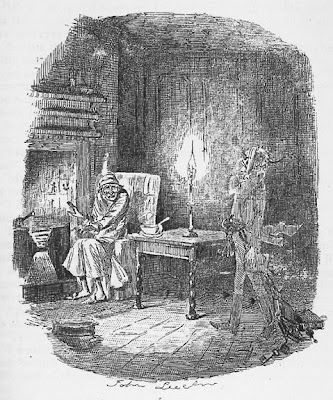
But that's not the case at all. The story is as effective today as it was 165 years ago. This is largely because of Dickens' straightforward and witty prose and plot development. His skill with his characters is also responsible--Scrooge especially could have come across as mere caricature, but we have no trouble accepting him as a real person. After all this time, his journey from a prison of greed and selfishness to true redemption is still charged with honest emotion.
SCROOGE MCDUCK
I've posted stuff about Ebenezer's namesake before, but Scrooge McDuck is such a cool guy, it's a good idea to pay him an occasional return visit.
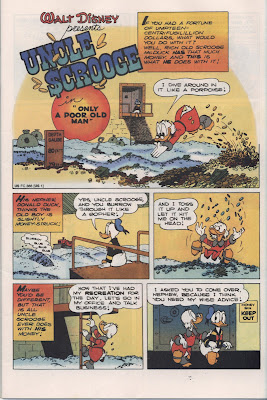
The great artist/writer Carl Barks created Scrooge for a Donald Duck story in Four Color Comics #178 (1947). In his initial appearance, Scrooge was pretty much a caricature of a stingy old man--existing largely as a plot devise to thrust Donald, Huey, Dewey and Louie into an adventure.
But the character hit a chord with readers and Scrooge returned for more stories, eventually getting his own comic book in 1952. His character grew more complex, though his basic character traits always remained intact. He was still stingy to the point of absurdity and he was often still consumed by greed. In fact, he keeps the bulk of his fortune in a giant money bin--in which he often goes for a swim.
But we also learn that Scrooge earned every last cent of his fortune by "being smarter than the smarties and tougher than the toughies." He's an adventurer and his fortune means as much (0r perhaps more) to him because of the memories it holds for him than for it's monetary value. Here's a dollar bill that's part of the money made prospecting in the Yukon. This quarter was a portion of his salary when he navigated a riverboat down the Mississippi.
Perhaps most importantly, we learn that Scrooge (though he is often loath to admit it) really does care deeply for his friends and family. It's this balance of stinginess with both humanity and a love of adventure that makes Scrooge so memorable.
Most Scrooge stories also featured Donald and the three young nephews. Often, the plots would involve foiling yet another attempt by the Beagle Boys to loot the money bin. In other stories, Scrooge would take off to some remote part of the world in search of a hidden treasure. Great art, solid plots and clever dialogue abound throughout the best of these tales.
Many talented writers and artists have contributed to the ever-growing Scrooge mythos. But those stories by Carl Barks, pouring humor & adventure & real emotion into every story he produced, are still the best of the lot. What could have been a one-joke character has grown into one of the most entertaining and enduring characters in fiction.
Gemstone Publishing recently put out a trade paperback titled Uncle Scrooge: A Little Something Special, reprinting some excellent Scrooge stories by various artists. There's a great qoute from the introduction by David Gerstein:
"Were Scrooge suddenly, one day, to exist in our real-life world, few of us can say we'd like to work for him; but almost all of us would find it inspiring to meet with him. Even though, should the meeting take place, it would likely end with our being unceremoniously thrown out of his money bin through a trapdoor."
Ebenezer Scrooge & Scrooge McDuck: They're not real, but by golly they should be.


